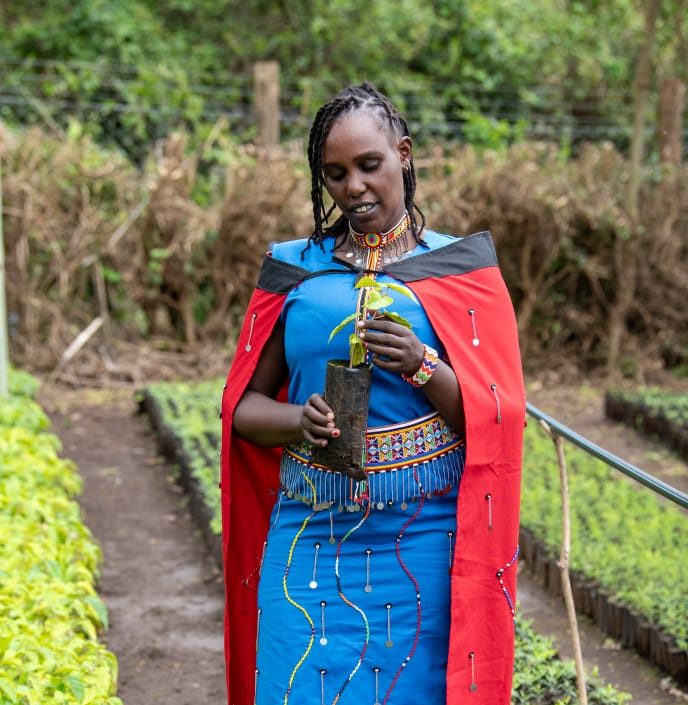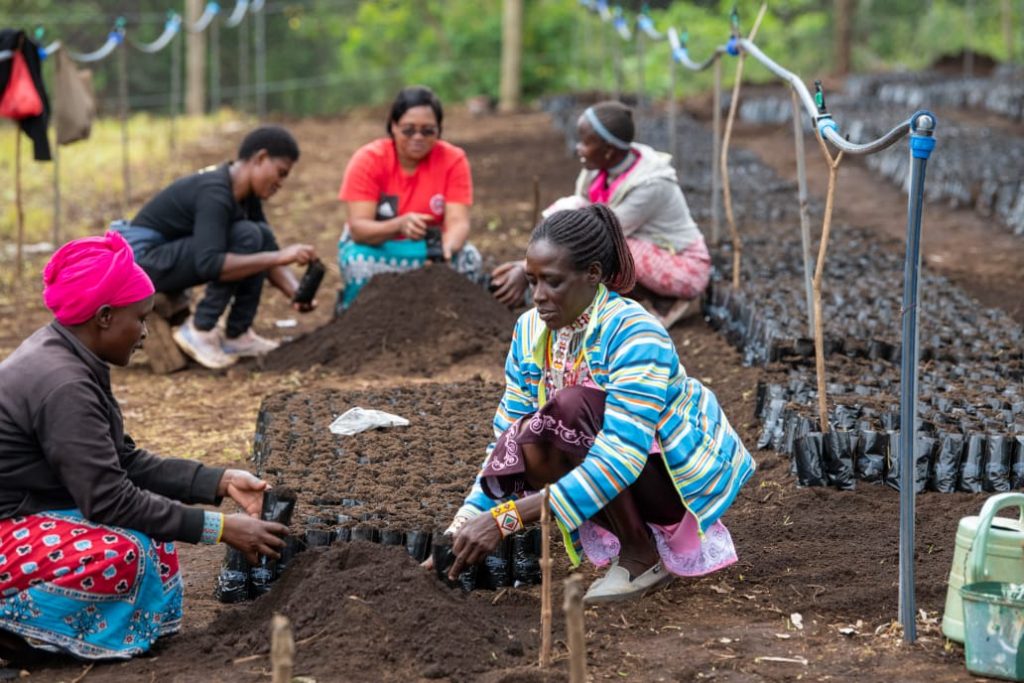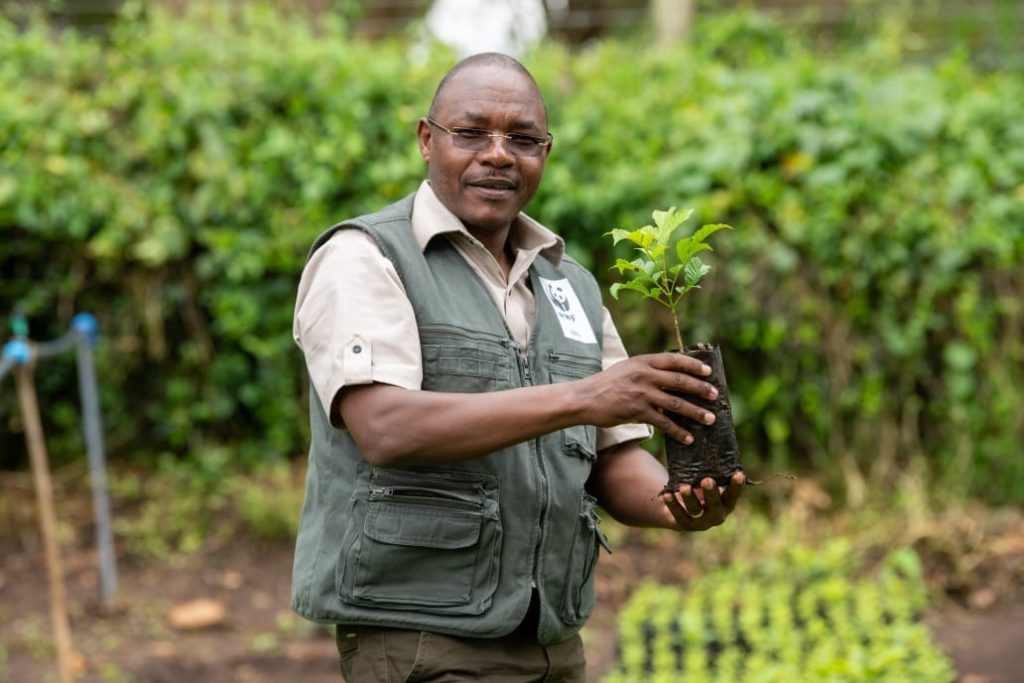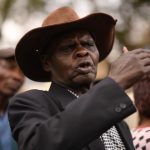Kenya’s bid to grow 15 billion trees by 2032 has received a major boost after a 1.3 million per year model tree nursery in Loitoktok, Kajiado County was completed.
The nursery, one of the country’s largest and the biggest in Kajiado County, has a bi-annual production of 650,000 seedlings.
The tree nursery which is funded by World Wide Fund for Nature – Kenya (WWF-Kenya) at a cost of Ksh 16 million is equipped with a solar-powered borehole to ensure consistent year-round seedling production.
The project seeks to explore the significance of well-equipped tree nurseries in the broader context of restoring forest ecosystems in the country.
Phanice Nadupoi, who is a local and hails from Ngarirogena village near Loitoktok Forest speaking about the project said that it has brought about a visible change in their eco system.
“As women, we work within the nursery and this has enabled us to eke a living, we have even managed to put up our own tree nursery, an apiary and also have a little money left over to engage in table banking,” she says.

Nadupoi says that their beekeeping activities are by far the most lucrative followed by their tree nursery.
“We have a group of women who came together and started beekeeping through the support of WWF-Kenya who gave us 30 hives. This activity has brought us together and has also had an economic impact now that we can earn a living,” she says.
From their last harvest, which was 66kgs, Nadupoi says they sold a 1kg of honey at Ksh 1,000. With the proceeds, she said they maintain the apiary as well as the nursery which organizations such as WWF- Kenya later purchase seedlings.
In an address during the site visit at Loitoktok Forest Station, WWF-Kenya CEO Mohamed Awer called upon local leaders to actively support forest restoration efforts, aiming to bring the border region at par with neighboring villages in Tanzania.
Additionally, he encouraged the local community members to explore opportunities for deriving benefits from conservation through nature based – solutions enterprises.

“The capacity of the nursery also points to the diversity of the tree seedlings it holds; which is a mix of indigenous and exotic seedlings that can even be planted in our farms to meet the needs of communities,” said Awer.
On his part, the Kenya Forest Service (KFS) Deputy Chief Conservatoire Dr. Clement Ngoriareng observed that the agency is playing a big responsibility in supporting the government’s 30 per cent tree cover target, “every county has its target, we reached out to many partners who have responded very well. We are adopting a forest model to encourage the restoration efforts across the country. WWF-Kenya has come strongly in supporting the initiative across the country in Kwale, North Rift and Nyandarua. This is among the seven model tree nurseries in the country.”
Head of conservation programmes at WWF-Kenya Jackson Kiplagat said the nursery will provide sufficient seedlings within the region.

“This initiative has an ambition to restore about 5,000 hectares directly through rehabilitation and about 20,000 hectares through other forms of restoration which goes beyond tree planting into the other grassland within this landscape,” he said.
Kiplagat said a sustainable natural environment calls for the restoration of both forest and grassland.
He said some of the seeds will be sold but they will find a modality between Community Forest Associations, KFS and WWF-Kenya to sustain production of seedlings.
Kajiado County has an annual goal of producing 4.7 million tree seedlings. Currently, the forest cover is at 10.94 per cent with a tree cover of 9.03 per cent. For Kajiado to meet its tree cover target of 19.09 per cent, it needs to grow 62.3 million trees by 2032.





